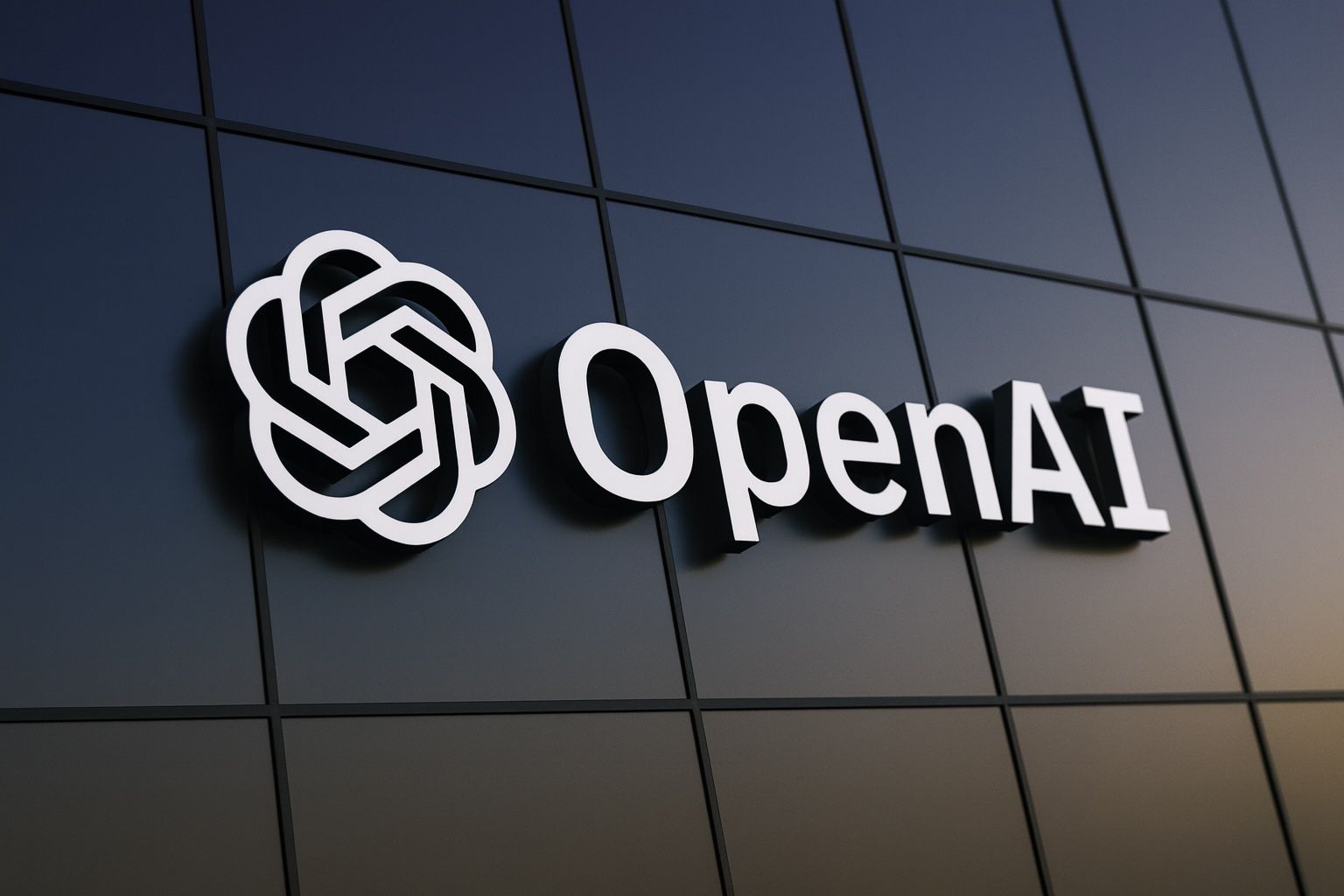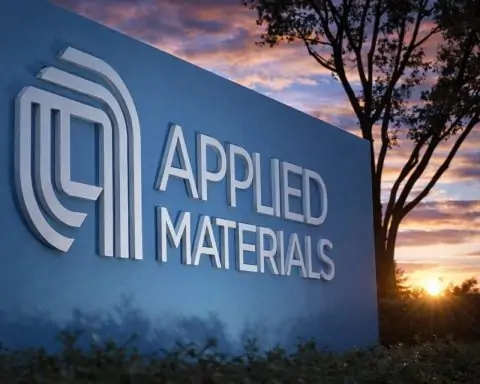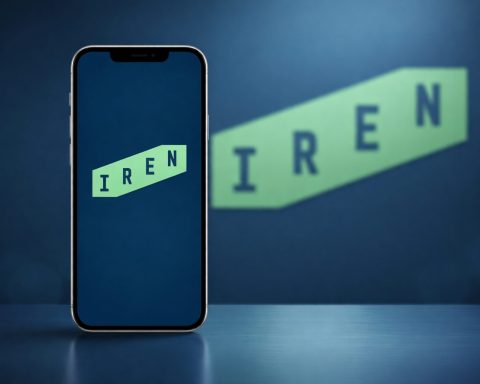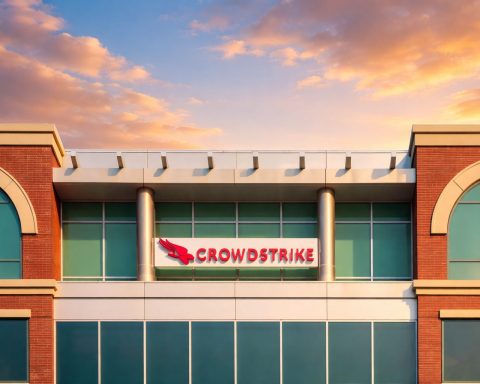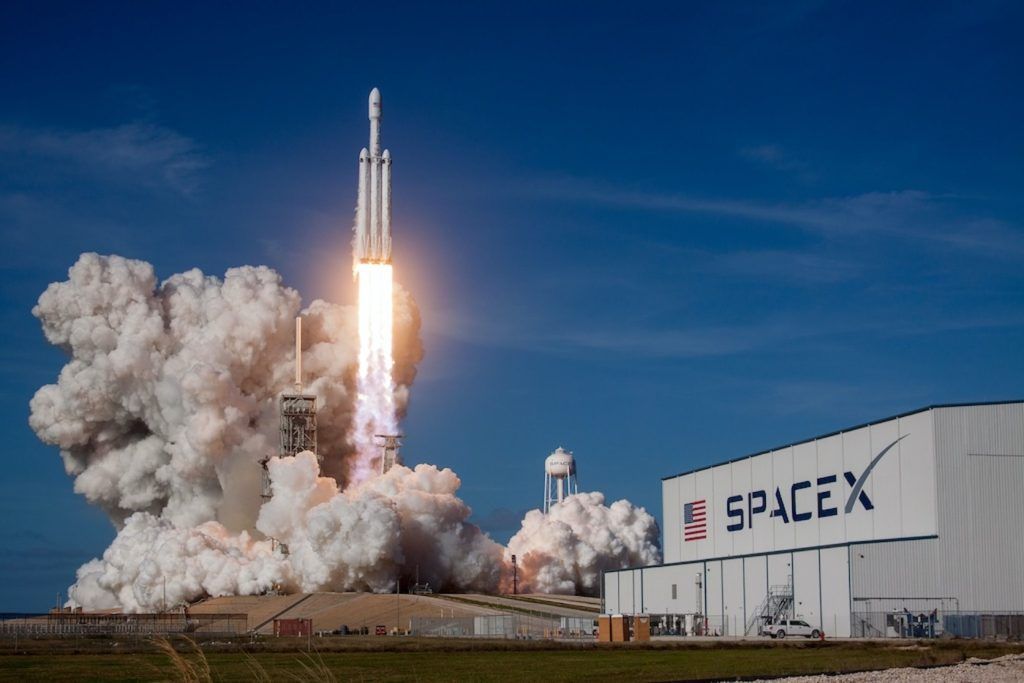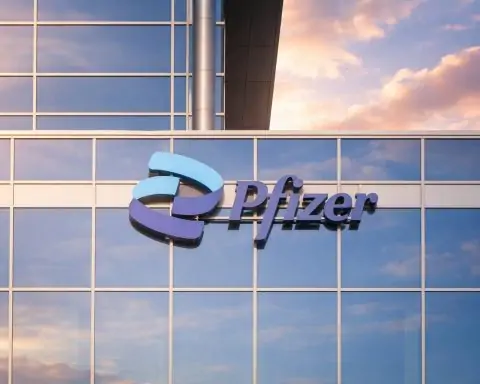- OpenAI is private and highly valued: OpenAI remains a privately held company in 2025 (not publicly traded), with its valuation skyrocketing from about $30 billion in early 2023 to around $300 billion by mid-2025 [1]. In October 2025, a secondary share sale valued OpenAI at an astounding $500 billion, making it the world’s most valuable startup [2].
- No direct stock for retail investors (yet): There is currently no OpenAI stock available on public exchanges, so retail investors cannot buy OpenAI shares directly. OpenAI’s CEO Sam Altman has said an IPO isn’t imminent due to the company’s “strange” capped-profit structure [3]. However, recent moves (massive funding rounds and corporate restructuring) suggest an eventual public listing is possible in the future.
- Indirect investment is possible: Retail investors can gain indirect exposure to OpenAI’s growth. The primary way is by investing in companies and funds that have stakes or partnerships with OpenAI. For example, Microsoft (NASDAQ: MSFT) is a major investor and partner, having invested nearly $14 billion into OpenAI [4]. Another big backer is SoftBank Group (TYO: 9984), which in 2025 is leading a huge $40 billion funding round for OpenAI [5]. NVIDIA (NASDAQ: NVDA) has also formed a strategic partnership and invested via convertible funding, since OpenAI relies on NVIDIA’s chips [6] [7]. Investing in these publicly traded companies gives indirect exposure to OpenAI’s success.
- Select funds holding OpenAI: Some investment funds that hold OpenAI equity are accessible to the public. Notably, the ARK Venture Fund (by Cathie Wood’s ARK Invest) has made OpenAI its second-largest position (~7.4% of the fund) and is open to all investors [8]. This means everyday investors can buy into that fund for a slice of OpenAI exposure. Additionally, publicly traded asset managers like Blackstone (NYSE: BX), TPG (NASDAQ: TPG), and T. Rowe Price (NASDAQ: TROW) have participated in OpenAI’s private rounds [9], so owning their stock gives an indirect stake (though OpenAI would be just one of many investments for those firms).
- Big-name investors & partnerships: OpenAI’s investor list reads like a “who’s who” of tech finance. Alongside Microsoft and SoftBank, top venture investors include Thrive Capital, Andreessen Horowitz (a16z), and Founders Fund [10]. Late-stage funding rounds in 2024–2025 also brought in firms like Sequoia Capital, Tiger Global, Coatue Management, Altimeter Capital, Dragoneer, and even sovereign wealth money (e.g. an Abu Dhabi fund) [11] [12]. OpenAI has a landmark partnership with Microsoft integrating its AI into Azure cloud and products, and a “Stargate” joint venture with SoftBank and Oracle to build AI supercomputing centers [13] [14]. There are even reports of OpenAI collaborating with former Apple designer Jony Ive on a new AI device, with SoftBank potentially funding that venture [15].
- Outlook – growth and exit plans: OpenAI’s business is growing explosively (annualized revenue hit ~$10 billion by mid-2025 [16], with ChatGPT reportedly reaching over 700 million weekly users [17]). To sustain this growth, OpenAI continues to raise capital frequently and spend heavily on computing power. Experts say the company will likely need an eventual exit (IPO or similar) to satisfy investors and fund its ambitions. OpenAI’s unusual non-profit governance is being restructured in 2025 to enable a full for-profit conversion, a prerequisite for any IPO [18] [19]. Financial analysts note that an OpenAI IPO could be massive – possibly a “meme-stock” frenzy – but also caution that its valuation may be running far ahead of current profits [20] [21]. For now, retail investors should approach indirect OpenAI plays with a balanced perspective, recognizing both the transformational potential of AI and the sky-high expectations already priced in.
Understanding OpenAI’s Unique Structure and Investors
OpenAI’s background: OpenAI started in 2015 as a research lab co-founded by Sam Altman and Elon Musk (among others) with a non-profit mission. In 2019, to fund expensive AI development, OpenAI created a hybrid for-profit entity (“OpenAI LP”) with a capped-profit model – investors can earn returns up to a certain limit, after which the majority of profits return to the original non-profit to support its mission [22]. This structure is highly unusual, and it’s part of why OpenAI hasn’t gone public yet. Altman has openly said he’s wary of an IPO in the near term, joking that he doesn’t want to be “sued by…Wall Street” for making unconventional decisions in pursuit of long-term AGI (Artificial General Intelligence) goals [23]. In his view, public market pressure might conflict with OpenAI’s mission. That said, the company’s recent actions suggest change is on the horizon – more on that in the outlook section.
Who owns OpenAI now? Because OpenAI is private, its ownership is divided among its founders, employees, and a list of venture capital firms and strategic investors. Over 11 funding rounds from 2016 through March 2025, OpenAI raised about $57.9 billion in capital [24] (a mix of cash investments and credits for cloud computing). Initially, tech VCs like Thrive Capital, Andreessen Horowitz (a16z), Khosla Ventures, and Founders Fund were among the backers [25] [26]. In early 2023, as ChatGPT’s popularity exploded, OpenAI arranged a tender offer allowing outside investors to buy shares from existing holders. Firms including Sequoia Capital, a16z, Thrive, and Tiger Global together invested roughly $300 million at a valuation around $27–29 billion [27] [28]. This gave many of Silicon Valley’s top funds a piece of OpenAI and put over 30% of OpenAI in the hands of outside investors at that time [29].
Microsoft’s multi-billion stake: By far the most pivotal investor is Microsoft. Microsoft first partnered with OpenAI in 2019, investing $1 billion and becoming OpenAI’s preferred cloud partner [30]. They deepened the partnership in 2021 with additional undisclosed funding and an exclusive license to integrate OpenAI’s tech into Azure (Microsoft’s cloud) [31] [32]. In 2023, Microsoft committed another $10 billion in a complex deal that secured it a significant share of OpenAI’s profits (reportedly 49% of profits until it recoups its investment up to a cap) [33] [34]. In return, OpenAI gets to use Microsoft’s Azure cloud infrastructure (funded by that investment) to train its models. This alliance has been transformative for both sides: OpenAI gains massive computing power, and Microsoft infuses OpenAI’s cutting-edge AI (like GPT-4) into its own products – from GitHub Copilot and Office 365 Copilot to Bing’s AI search [35] [36]. Essentially, Microsoft leverages OpenAI to leap ahead in the AI race against rivals.
How big is Microsoft’s ownership? Interestingly, Microsoft’s equity stake in OpenAI may be smaller than many assume. The 2023 $10B deal was structured more as an investment for profit-share and cloud credits than a straight equity purchase. Microsoft has the rights to a chunk of OpenAI’s profits (up to a limit) and first-rights to commercialize OpenAI’s tech, but it does not control OpenAI’s board or governance [37] [38]. Microsoft hasn’t disclosed its exact equity percentage – analysts speculate it could be on the order of only 5–10% of OpenAI’s equity [39]. (If it were much higher, Microsoft would likely have to disclose it in SEC filings.) So, while Microsoft is often seen as “owning half of OpenAI,” in reality its influence comes from partnership contracts and profit-sharing more than outright stock ownership. Regardless, Microsoft remains deeply intertwined with OpenAI’s business and is a clear beneficiary of OpenAI’s growth.
SoftBank’s massive bet: In late 2024 and 2025, SoftBank Group emerged as another major player in OpenAI’s story. SoftBank – a Japanese tech investment conglomerate known for bold bets – began buying into OpenAI through its Vision Fund 2, reportedly investing $2.2 billion in late 2024 [40]. By April 2025, SoftBank announced a deal to invest up to $40 billion more into OpenAI Global (the for-profit arm) [41] [42]. This is one of the largest single commitments ever to a private tech company. The first $10B tranche landed in April 2025 and the remainder (up to $30B additional) was set for late 2025, contingent on OpenAI meeting certain conditions (more on that in a moment) [43] [44].
SoftBank’s investment, alongside others in that round, valued OpenAI around $300 billion post-money [45]. SoftBank also formed a strategic joint venture with OpenAI called “Stargate” to build dedicated AI data centers in the U.S. (Oracle and NVIDIA are tech partners in this project) [46] [47]. SoftBank’s CEO Masayoshi Son has described OpenAI as the company “closest to achieving AGI” and positioned it as SoftBank’s most important partner for the next tech revolution [48]. Essentially, SoftBank is doubling down on OpenAI being the platform that could lead to Artificial General Intelligence, which aligns with Son’s long-term vision.
For retail investors, SoftBank’s involvement is notable because SoftBank Group Corp. is publicly traded in Japan. Buying SoftBank stock is effectively an indirect way to ride on OpenAI’s coattails (though SoftBank’s portfolio includes many other holdings too). Do keep in mind SoftBank’s fortunes can be volatile – it’s known for big tech bets that can swing its stock. But with an announced $30+ billion commitment, SoftBank will have significant exposure to OpenAI’s future valuation swings [49].
Other major investors: OpenAI’s later funding rounds have drawn in a broad mix of investors:
- Venture & Growth Funds: Virtually every top-tier Silicon Valley firm now has a stake. In addition to a16z, Thrive, Sequoia, and Founders Fund, others like Tiger Global, Coatue, Lightspeed, K2 Global, D1 Capital, Dragoneer, Altimeter and more have joined various rounds [50]. These are private funds not accessible to retail investors, but their involvement shows the strong institutional belief in OpenAI’s prospects.
- Private Equity and Asset Managers: Big-name Wall Street players have also jumped in. For example, the $8.3 billion round in mid-2025 (part of the larger SoftBank-led raise) included Blackstone, TPG, and T. Rowe Price among the investors [51]. Blackstone and TPG are interesting because they are themselves public companies (BX and TPG), meaning they used their funds to invest in OpenAI. Similarly, mutual fund giants like T. Rowe Price and Fidelity have reportedly participated [52] – likely via their technology-focused funds. This crossover interest underscores OpenAI’s status as a must-have in tech portfolios, despite being private.
- Strategic Tech Partners: Beyond Microsoft and SoftBank, OpenAI has also linked up with other tech companies. NVIDIA, the leading AI chipmaker, is one example. In late 2024, NVIDIA participated in an OpenAI funding round (via convertible debt) and in 2025 it committed to provide up to $100 billion worth of its GPUs to OpenAI over time, financed in stages [53] [54]. This arrangement effectively gives NVIDIA a future equity stake and secures OpenAI the critical hardware it needs. Another strategic partner is Oracle – OpenAI agreed to spend a reported $300 billion on Oracle Cloud services over five years [55], diversifying its cloud beyond Microsoft. Oracle (NYSE: ORCL) doesn’t own equity in OpenAI (as of 2025), but it stands to benefit commercially from this huge cloud contract. There were even rumors of an Apple-OpenAI collaboration after news broke that Apple was working to integrate ChatGPT technology into iOS, which prompted Elon Musk’s very public backlash [56]. While Apple hasn’t publicly invested in OpenAI, the chatter of partnership shows how integral OpenAI has become in the tech ecosystem.
Accessibility to the public: Many of OpenAI’s direct investors are venture capital or private equity funds that ordinary investors cannot directly buy into. Funds like Andreessen Horowitz or Thrive Capital raise money from accredited investors and institutions, not from the public markets. However, a few notable exceptions exist:
- Microsoft (MSFT) – Public stock. Major OpenAI backer and partner.
- SoftBank (9984.T) – Public stock. Large OpenAI investor (SoftBank trades on the Tokyo Stock Exchange, though U.S. investors can access it via OTC or international brokers).
- Blackstone (BX) – Public stock. Invested in OpenAI’s 2025 round [57] (likely via its growth fund).
- TPG (TPG) – Public stock. Also part of 2025 round [58].
- T. Rowe Price (TROW) – Public stock. Asset manager with exposure to OpenAI in its funds [59].
- ARK Venture Fund – Publicly available fund. This is a new hybrid venture capital fund launched by ARK Invest that allows retail investors to buy in. As of 2025, ARK Venture Fund’s #2 holding is OpenAI (7.4% of the fund) [60]. In other words, you can indirectly own a slice of OpenAI by purchasing units of this fund (typically through brokerage platforms). This is one of the few “direct” exposure paths for non-accredited individuals to invest in OpenAI’s equity. The fund also holds other private tech giants like SpaceX and Anthropic, and charges a 2.9% annual fee [61] for management.
In summary, OpenAI’s ownership is currently a patchwork of private and corporate investors. Retail investors can’t buy OpenAI stock outright in 2025, but they can invest in the publicly traded proxies (like MSFT, NVDA, etc.) or specialized funds that have OpenAI in their portfolios. Next, we’ll break down the practical ways you can invest in or around OpenAI as an individual.
Ways to Invest in OpenAI (Direct and Indirect) – A 2025 Guide for Retail Investors
Since OpenAI is still private, direct investment is mostly limited to accredited investors. However, there are several indirect avenues that give you exposure to OpenAI’s growth. Let’s explore all current options:
1. Wait for an OpenAI IPO (Not Yet Available)
The most straightforward (but currently hypothetical) way to invest in OpenAI is by buying its shares if and when it goes public. As of October 2025, OpenAI has no immediate plans for an IPO, according to CEO Sam Altman [62]. The company’s unusual structure – with a controlling non-profit and a profit cap for investors – makes a traditional IPO complicated without restructuring. Altman has even said he doesn’t feel “well-suited” to running a public company and is cautious about listing OpenAI in the near term [63].
That said, an IPO in the future is not off the table. In fact, signs point toward preparations for a potential public listing: OpenAI brought on a seasoned CFO (ex-Block executive Sarah Friar in mid-2024) who has IPO experience [64], and Reuters reported Altman was exploring changes to OpenAI’s corporate structure to accommodate public investors [65]. Moreover, the large funding deals in 2025 include clauses about converting investor stakes into shares upon an IPO [66]. For example, SoftBank’s investment came in the form of “convertible preferred” equity that will automatically convert to common stock if OpenAI lists [67].
🛈 Guidance: As a retail investor, there isn’t much you can do here except stay tuned. If OpenAI files for an IPO down the road, it will become big news. At that point, buying OpenAI stock through a brokerage would finally become possible. Some analysts predict that an OpenAI IPO would be enormous – possibly one of the hottest tech IPOs ever, given the company’s fame and the AI hype [68] [69]. Until then, you’ll need to consider indirect methods described below. Keep an eye on financial news for any hints of OpenAI’s IPO timeline (rumors, SEC filings, or announcements). But in 2025, no IPO is scheduled and Altman insists it’s not a priority in the short term [70].
2. Buy OpenAI on Private Markets (Accredited Investors Only)
For those who qualify as accredited investors (typically high-net-worth individuals or institutions), it is sometimes possible to buy OpenAI shares on secondary markets. As employees or early investors seek liquidity, they can sell their equity through private-market brokers. In fact, in 2025 OpenAI facilitated a large secondary sale where employees sold about $6.6 billion worth of shares to new investors at a $500B valuation [71] [72]. Firms like Thrive Capital, SoftBank, and Dragoneer were among the buyers in that deal [73].
If you’re accredited, platforms such as Forge Global, EquityZen, or Hiive sometimes list OpenAI shares (or more commonly, derivatives like SPVs or fund interests that hold OpenAI). For instance, Forge Global has advertised that it can help eligible investors invest in pre-IPO companies like OpenAI [74] [75]. Typically, you would need to meet income/net-worth thresholds and often commit a minimum investment (which can be tens of thousands of dollars or more). Liquidity is limited and the shares are usually subject to transfer restrictions or lock-ups.
🛈 Guidance: If you are accredited and determined to get OpenAI exposure directly, research reputable private investment platforms. Check if they have any OpenAI offerings and be prepared to move quickly and do thorough due diligence. Prices in secondary sales can be very steep (as seen by the $500B valuation in 2025’s employee share sale), so consider whether the risk/reward makes sense. It’s wise not to put more than you can afford to lose, as private shares are illiquid and valuations can fluctuate dramatically. For most retail investors, this route is not accessible, which is why indirect public market options are the go-to.
3. Invest via Public Companies That Back OpenAI
One of the easiest ways for an everyday investor to ride OpenAI’s momentum is to buy stock in companies that have a stake in or partnership with OpenAI. Here are the key ones:
- Microsoft (NASDAQ: MSFT): Microsoft is the cornerstone ally of OpenAI. It’s not only an investor (with billions committed) [76], but also OpenAI’s preferred deployment partner (Azure cloud and product integrations). By investing in Microsoft, you indirectly back OpenAI’s success and benefit from Microsoft’s broad AI strategy. Microsoft has integrated OpenAI’s GPT models into Windows, Office (Copilot features in Word, Excel, etc.), GitHub, Bing, and more [77] [78] – driving new revenue streams in cloud services and software subscriptions. Financially, Microsoft’s Azure division gains from OpenAI’s massive cloud usage (OpenAI pays Microsoft for cloud GPU time, funded by Microsoft’s own investment – a circular but potentially lucrative arrangement). Guidance: Microsoft is a mega-cap company, so OpenAI is just one factor in its stock performance. That said, analysts see OpenAI as a significant growth catalyst for Microsoft’s cloud and enterprise business. If OpenAI continues to thrive, Microsoft stands to benefit via profit-sharing and AI dominance [79] [80]. Buying MSFT gives you exposure to that upside, plus the stability of Microsoft’s diversified business. Remember, any single partnership won’t make or break Microsoft, but AI is an increasingly important part of its valuation narrative.
- SoftBank Group (TYO: 9984 / OTC: SFTBY): SoftBank is making a huge bet on OpenAI – up to $30+ billion in direct investment [81]. For SoftBank, which has a history of investing in tech disruptors (via its Vision Fund), OpenAI could become one of its hallmark holdings. If OpenAI’s valuation continues to climb (or if it eventually IPOs at a premium), SoftBank’s stake could translate into a windfall. SoftBank’s stock tends to reflect the sum of its parts (its holdings in various companies like Alibaba, Arm, etc.). As OpenAI becomes a larger part of SoftBank’s portfolio, public investors in SoftBank will effectively gain more exposure to OpenAI’s value. Guidance: Investing in SoftBank is essentially an indirect play on OpenAI plus many other tech assets. Be aware that SoftBank carries debt and its stock can be volatile, influenced by global tech market swings. Also, SoftBank’s commitment is so large that some analysts note SoftBank itself is stretching its capital limits to fund OpenAI [82]. Still, SoftBank could see significant NAV (net asset value) growth if OpenAI’s future pans out as hoped. For a U.S. investor, buying SoftBank’s ADR (SFTBY) or a Japan broker access would be the way to get in.
- NVIDIA (NASDAQ: NVDA): While not traditionally cited as an “OpenAI investor” in the equity sense, NVIDIA has direct financial exposure to OpenAI’s growth. The two companies are deeply intertwined: OpenAI’s AI models require thousands of NVIDIA GPUs, and OpenAI’s rise has driven unprecedented demand for NVIDIA’s high-end chips. In 2023–2024, NVIDIA’s stock surged partly because of AI server demand, with OpenAI as a poster child for that trend. In 2025, NVIDIA took the partnership further by agreeing to supply hardware on special terms: reportedly committing up to $100 billion in value to OpenAI, delivered as hardware leases/investments in tranches [83] [84]. In practice, this means OpenAI gets priority access to NVIDIA’s GPUs (critical amid global chip shortages) and NVIDIA may get warrants or a stake in OpenAI in return. Even if we ignore any equity component, investing in NVIDIA is a way to benefit from OpenAI’s exploding compute needs. Every time OpenAI expands its model deployments or launches a new service like GPT-5, it likely buys more NVIDIA chips – contributing to NVIDIA’s revenue. Guidance: NVIDIA is a large, diversified semiconductor firm, so its stock is influenced by many factors (gaming, data center, competition, etc.). But AI acceleration is a key driver for NVIDIA, and OpenAI is one of the most important customers setting that narrative. Owning NVDA gives you exposure to the picks and shovels of the AI gold rush. If OpenAI succeeds wildly, NVIDIA’s sales to OpenAI (and copycats trying to keep up) should increase. Note, however, that NVIDIA in late 2024 also invested in OpenAI via convertible debt [85], meaning NVIDIA could directly share in OpenAI’s valuation upside in the future.
- Other Big Tech Stocks (indirectly): Companies like Oracle (ORCL) and Apple (AAPL) have been connected to OpenAI through partnerships, though not equity stakes. Oracle is providing cloud infrastructure for OpenAI’s new projects (and thus could see revenue growth from a $300B cloud contract) [86]. Apple’s potential integration of OpenAI tech could keep its devices appealing, though Apple tends to develop its own AI too. Amazon (AMZN) and Google (GOOGL), while competitors via their own AI labs (Anthropic, Google’s DeepMind, etc.), also benefit from the overall AI wave that OpenAI sparked. If your goal is broad AI exposure, these giants are part of the picture – but if you want specific OpenAI exposure, Microsoft, SoftBank, and NVIDIA remain the clearest public proxies.
- Publicly Traded Investors: As mentioned earlier, firms like Blackstone (BX) and TPG (TPG) took part in OpenAI’s 2025 funding [87]. However, investing in those firms’ stocks won’t translate to a pure OpenAI play – OpenAI might be just one investment among hundreds in their private equity portfolios. For example, Blackstone manages over $900B in assets; even a few hundred million in OpenAI (if that) would be a drop in the bucket. The same logic applies to T. Rowe Price (TROW) – any OpenAI exposure comes via a fund they manage, not directly impacting TROW’s own earnings much. Thus, while these are noteworthy, buying their stocks solely for OpenAI exposure is not very effective or direct.
Bottom line: Picking Microsoft is arguably the simplest way for a retail investor to get indirect exposure to OpenAI’s upside [88] [89], given Microsoft’s deep integration and financial ties. NVIDIA offers another angle – an investment in the AI arms supplier fueling OpenAI [90]. SoftBank is a higher-risk/reward proxy due to its concentrated bet. One might even consider a basket of these stocks to spread out exposure. Always assess these companies on their overall merits, not just their OpenAI connection.
4. Invest Through Funds and ETFs with AI Exposure
If stock-picking isn’t your preference, you can use funds that capture the AI theme (including OpenAI indirectly):
- ARK Venture Fund (ARKVX) – Direct OpenAI stake. We highlighted this above: ARK Invest’s venture fund holds private companies and is open to retail. OpenAI is a top holding [91]. This is as close as you get to owning OpenAI without being accredited. You can invest relatively small amounts, but note the high fee (2.9%) and that it’s a long-term, illiquid investment (redemptions may be limited). Essentially, ARKVenture lets you piggyback on ARK’s private deal access.
- AI-Focused ETFs: Several technology ETFs aim to capture the AI boom. Examples include:
- Roundhill Generative AI ETF (NYSE: CHAT) – focuses on generative AI companies [92].
- Global X Robotics & AI ETF (BOTZ) – holds a basket of AI and robotics stocks [93].
- iShares Exponential Tech ETF (XT) – broader disruptive tech which includes AI names [94].
- ROBO Global Robotics & Automation ETF (ROBO) – global robotics/AI companies [95].
These ETFs do not own OpenAI (since it’s private), but they hold the likes of NVIDIA, Microsoft, Google, etc. So they provide diversified exposure to the AI industry that OpenAI is a part of [96] [97]. If OpenAI’s rise lifts the whole AI sector (demand for chips, competitive responses from others), these funds should benefit. The trade-off is you won’t get the pure upside of OpenAI’s equity, but you also avoid single-company risk.
- Mutual Funds with OpenAI investors: Some actively managed tech mutual funds or crossover funds may indirectly have OpenAI exposure via their holdings in Microsoft or via pre-IPO allocations. For instance, a T. Rowe Price Global Technology fund might hold Microsoft and might have acquired a small stake in OpenAI in a private round. The details can be hard to find without fund reports. This is a very indirect method and not something you can easily target, but it exists in the ecosystem.
- Other Venture Funds (for accredited or via feeder): Outside ARK, a few specialty funds or SPVs that include OpenAI could be accessible through certain platforms. For example, some fintech platforms allow accredited investors to join pooled vehicles that invest in top private tech companies. These are niche opportunities and come with high minimums and fees.
Guidance: For most retail investors, a sensible approach to “invest in OpenAI” is to blend some AI-focused public stocks or ETFs in your portfolio. You might combine an ETF like CHAT or BOTZ (to cover a range of AI beneficiaries) with a big player like Microsoft or NVIDIA for more direct exposure. This way, you participate in the AI wave fueled by OpenAI without over-concentrating on one private company. If you’re more adventurous and meet requirements, the ARK Venture Fund is a unique chance to get a sliver of OpenAI’s actual equity [98] – just be aware of the long investment horizon and lack of liquidity (you’re basically investing in a quasi-VC fund).
5. Monitor Future Opportunities & Competitors
Lastly, keep in mind that OpenAI’s dominance in AI has spurred many competitors and partner companies – some of which are also investable. While this goes beyond investing in OpenAI itself, it’s relevant for a holistic strategy:
- OpenAI Competitors: Companies like Anthropic, Cohere, Google’s DeepMind, Meta AI, and Amazon’s AWS AI are all in the race. Anthropic (maker of Claude AI) received major investments from Google in 2022 and more recently from Amazon (which invested $4B in 2023 for a minority stake) – showing how tech giants are hedging bets in AI. If you’re bullish on AI, you might consider investing in Google (Alphabet) or Amazon, which, while competing with OpenAI, will benefit from AI advancements and have their own large language models. Similarly, chipmakers beyond NVIDIA – like AMD or TSMC – stand to gain from industry-wide AI compute demand (TSMC manufactures the advanced chips that AI models run on [99]).
- Partner Ecosystem: OpenAI’s technology is being adopted by many firms. For example, Stripe (payments) and Shopify integrated ChatGPT into their services; Salesforce partnered with OpenAI for AI customer service; and countless startups are built on OpenAI’s API. While you can’t invest in all of these, it illustrates that OpenAI’s success contributes to a broader AI economy. Some of those companies (like Salesforce or Shopify) are public and could see incremental gains from leveraging OpenAI’s tech.
- Merger & Acquisition (M&A) Angle: It’s not inconceivable that a big tech company could attempt to acquire a stake or the entirety of OpenAI in the future (subject to regulatory hurdles and OpenAI’s board approval). Microsoft currently has a strong hold through partnership rather than outright ownership. If OpenAI’s tech becomes absolutely critical, one could speculate about Microsoft increasing its stake or others trying to buy in. Any such moves would be complex given OpenAI’s nonprofit ties and valuation, but if news of a major corporate buy-in broke, it could present new investment dynamics (e.g., if Google or Apple ever tried to invest, their stocks might react). For now, this is speculative – the trend has been OpenAI staying independent and raising funding from a broad base.
In summary, there is no shortage of ways to invest in the AI revolution that OpenAI is leading – but investing directly in OpenAI itself remains tricky for the general public as of 2025. By combining some of the methods above, you can approximate an “OpenAI investment”: for instance, owning Microsoft (for equity stake/profit share exposure), NVIDIA (for hardware backbone exposure), and perhaps an AI ETF (for diversified industry growth) covers many angles of OpenAI’s influence.
Recent Funding, Partnerships & What They Signal
To fully appreciate the investment landscape, let’s recap OpenAI’s major funding rounds and partnerships up to October 2025 and what each signifies for investors:
- 2019: The Microsoft Partnership Begins – OpenAI and Microsoft struck a landmark deal: Microsoft invested $1 billion and became OpenAI’s exclusive cloud provider [100] [101]. This was a turning point where OpenAI shifted from pure research lab to a hybrid for-profit model to utilize big corporate resources. For Microsoft, it was a chance to get ahead in AI by basically “adopting” OpenAI’s innovations into Azure. Investment signal: A deep-pocketed ally validated OpenAI’s potential early on. This partnership laid the groundwork for all future investment discussions – essentially Microsoft provided both money and infrastructure in exchange for a strategic stake in OpenAI’s success.
- 2020: Exclusive Licensing – OpenAI licensed its GPT-3 technology to Microsoft exclusively in 2020 [102]. PitchBook called this deal an “unprecedented milestone” in AI [103]. It meant Microsoft had first rights to commercialize powerful GPT models. Investment signal: Rather than sell the company or go public, OpenAI found a way to monetize via licensing while remaining private. Microsoft’s increasing commitment also hinted that more investment was likely if OpenAI continued to produce breakthrough tech.
- 2021: Further Funding (Quietly) – Microsoft reportedly expanded its investment with an undisclosed round in 2021 [104] [105]. Additionally, other investors like Khosla Ventures came in around this time. Details are sparse (OpenAI didn’t announce every fundraise publicly), but by late 2021 OpenAI was estimated to be valued in the tens of billions. Investment signal: OpenAI was steadily raising cash to finance research and the computing power needed for models like GPT-3 and, later, GPT-4. It was still largely an insiders’ game; retail investors couldn’t partake.
- Late 2022: ChatGPT Launches – While not a funding round, the public launch of ChatGPT in Nov 2022 changed everything. Within months, ChatGPT’s virality (100 million users in ~2 months) put OpenAI on the map for mainstream investors [106] [107]. Suddenly, OpenAI went from a somewhat niche AI lab to a household name and the center of Silicon Valley’s hype.
- Early 2023: Microsoft’s $10 Billion Deal – In January 2023, as widely reported, Microsoft poured $10 billion more into OpenAI [108]. This was structured over multiple years and tied to Microsoft’s Azure costs for OpenAI. It gave Microsoft a share of OpenAI’s profits (up to a certain cap) and solidified Azure as the home for OpenAI’s model training. Around the same time, OpenAI’s valuation was pegged near $29 billion in private discussions [109]. Investment signal: This marked the arrival of “mega-rounds” for OpenAI – multi-billion financing usually seen only in late-stage companies. It underscored that OpenAI might never need a traditional VC Series C or D; instead, it could lean on corporate giants for capital.
- April 2023: VC $300M Tender Offer – TechCrunch revealed that OpenAI closed a $300 million secondary share sale at a $27–29B valuation, bringing in venture firms like Sequoia, a16z, Thrive, Tiger, and Founders Fund [110] [111]. This was essentially a way for employees and early backers to cash out some holdings to new VC investors. Investment signal: Top VCs who missed out on early OpenAI got a piece of the pie, indicating broad belief in OpenAI’s future. It also provided some liquidity to keep talent incentivized (they could sell a bit of equity for reward).
- Mid 2023: No IPO Yet – Despite rampant speculation, Sam Altman stated in June 2023 that OpenAI had no plans to go public soon due to its mission-driven approach and profit cap structure [112] [113]. He emphasized the need to freely make “strange” decisions toward AGI without worrying about quarterly earnings [114]. Investment signal: Public investors were put on notice that they shouldn’t expect an OpenAI stock debut in 2023. It would remain a private endeavour backed by select investors for the time being.
- Late 2023: $4–6 Billion Raise Rumors & New Partners – Toward the end of 2023, media reports (e.g., from the Wall Street Journal and others) suggested OpenAI was exploring allowing employees to sell shares at valuations between $80–90 billion, or raising additional capital in that range. In October 2024, OpenAI indeed raised a significant round of about $6.6 billion (per Investing News Network) [115]. Microsoft apparently contributed $0.75B in that round but “refused to make a bigger contribution,” possibly capping its ownership [116]. Other participants likely included new faces; one report says NVIDIA joined this round via a convertible note, and the valuation was around $157 billion as of late 2024 [117] [118]. Also in late 2023, Jony Ive’s collaboration with OpenAI (to design an “AI device”) and SoftBank’s interest in funding it to the tune of $1B made headlines [119]. Investment signal: OpenAI’s valuation was climbing extremely fast (doubling or more within a year). New strategic investors like NVIDIA got involved, seeing mutual benefit. Microsoft’s hesitance to double down further opened the door for others (possibly to avoid antitrust concerns or overexposure). This set the stage for the SoftBank-led mega-round to come.
- January 2025: “Stargate” Project and Trump Administration Support – In a somewhat surprising development, OpenAI, SoftBank, and Oracle announced a U.S.-based AI compute project named Stargate in early 2025 [120] [121]. It involves building cutting-edge data centers dedicated to OpenAI’s models. Even the (newly elected) U.S. President at that time highlighted Stargate as critical infrastructure, underscoring the national importance of AI [122]. Microsoft, notably, was not a financier of Stargate (only a tech partner), which led to speculation about whether Microsoft’s relationship with OpenAI was cooling [123] [124]. (Bloomberg later reported Microsoft and OpenAI re-negotiated some terms – Microsoft dropped exclusive cloud rights but kept preferential treatment [125]. Microsoft still retains a right of first refusal for any cloud deals OpenAI might consider with rivals [126].) Investment signal: This showed OpenAI expanding its partnership network (bringing in Oracle for cloud and getting political backing). It also hinted that OpenAI was ensuring it isn’t solely dependent on Microsoft’s cloud, which makes it more attractive to other investors like SoftBank or NVIDIA who might have been wary of Microsoft’s tight grip. For investors, it suggests OpenAI will leverage multiple capital sources and partnerships to achieve its goals – not just ride one big corporate sponsor.
- March–April 2025: SoftBank Leads $40B Funding Round (~$300B Valuation) – The biggest funding news came in spring 2025: OpenAI secured $40 billion in fresh funding led by SoftBank [127]. SoftBank itself committed $30B of that (with plans to syndicate $10B to other co-investors) [128], and the rest was filled by others like Altimeter, Coatue, Thrive, and Microsoft (maintaining involvement) [129]. The deal valued OpenAI at around $300 billion post-money [130] – a record-shattering private valuation. About $18B of this funding was earmarked specifically for the Stargate compute project with SoftBank/Oracle [131]. Crucially, this deal came with a condition: OpenAI must convert to a full for-profit C-corp structure by the end of 2025 (dropping the non-profit control and profit cap), or SoftBank’s total investment would scale back to $20B [132] [133]. In other words, OpenAI’s investors applied pressure to eliminate the unique structure and become a normal company. This required sign-off from OpenAI’s board (including the OpenAI non-profit and Microsoft) and even regulatory approval (California’s Attorney General, because the nonprofit would be transitioning) [134]. Elon Musk – who had parted ways with OpenAI in 2018 – made legal noises about this transition (filing and later dropping a lawsuit claiming OpenAI strayed from its non-profit promise) [135] [136]. Despite any drama, OpenAI indicated it was moving ahead with the restructuring plans in mid-2025 [137]. Investment signal: This round truly signaled “OpenAI has arrived” as a mature company, not just a startup. The entrance of huge institutional money (SoftBank and top-tier funds) at a $300B valuation put OpenAI in the league of the most valued private firms globally (rivaling ByteDance and SpaceX). For investors, it also signaled that an IPO or at least a clear ownership structure is likely on the horizon – because converting to a full for-profit and issuing actual shares is a step toward eventual public trading [138] [139]. The immense valuation, however, gave some pause – could OpenAI really be worth $300B without public market price discovery? Yet, demand for a piece of OpenAI was so high that this round was oversubscribed and even accelerated ahead of schedule [140]. OpenAI’s revenue growth (from ~$5B to $10B annual run-rate in a few months) [141] and its central role in AI likely fueled investors’ optimism of future monetization.
- Mid-Late 2025: Continued Surge & Secondary at $500B – After the spring round, OpenAI’s growth didn’t slow. By mid-2025, reports came that ChatGPT usage had crossed 700 million weekly active users [142] and revenue was still climbing steeply [143]. In August 2025, The New York Times reported OpenAI was raising additional capital towards a total of $40B earlier than planned, and by October 2025 OpenAI facilitated a secondary share sale for employees at a colossal $500 billion valuation [144]. This made OpenAI the world’s most valuable private startup, surpassing even SpaceX [145]. The buyers in this secondary included some previous investors (Thrive, SoftBank) and new institutional investors like Dragoneer and an Abu Dhabi fund (MGX) [146]. Investment signal: Even at a half-trillion valuation, investor appetite remained strong – a testament to OpenAI’s dominance in a potentially transformative industry. However, such valuations also raised eyebrows among market commentators: some analysts warned of a potential AI bubble forming, given how quickly and how high OpenAI’s price had climbed on private markets [147]. OpenAI’s supporters countered that the company’s trajectory (aiming for AGI, multi-billion revenue, etc.) justifies big numbers, but clearly the stakes are high. For anyone looking to invest, it underscores the point: valuations are rich, and one should be conscious of the hype versus reality gap.
In summary, OpenAI’s funding timeline shows an acceleration from strategic partnership (2019) to venture funding (2023) to massive global investment (2024–25). Each phase brought in new types of investors – from tech giants to blue-chip VCs to sovereign wealth funds. This trajectory also mirrors the broader market’s recognition of AI as the next big revolution (comparable to the internet or mobile booms of past decades).
For a prospective investor or enthusiast, the key takeaways are:
- OpenAI has the financial backing and partnerships of several of the world’s most powerful tech entities (Microsoft, SoftBank, etc.), reducing certain risks (e.g., funding risk, go-to-market risk) but introducing others (e.g., strategic conflicts or dependence on partners).
- The company’s valuation is already enormous, implying that a lot of future success is “priced in” by early investors. If you invest indirectly now (via Microsoft, funds, etc.), you’re buying into that rich valuation implicitly.
- OpenAI’s willingness to restructure and possibly eventually IPO means today’s private investment phase is laying the groundwork for public investment opportunities down the line. When that comes, expect high volatility and intense public interest (much like seen in hot IPOs of companies like Facebook or Uber, perhaps amplified by AI hype).
Future Outlook: Growth, IPO Prospects, and Expert Opinions
Looking ahead, what can investors expect from OpenAI? Here are some perspectives and projections as of late 2025:
Continued Breakneck Growth (and Spending): OpenAI’s revenue ramp-up has been extraordinary. By June 2025, OpenAI reportedly hit $10 billion in annualized revenue (double the ~$5B run-rate from Dec 2024) [148]. Much of this comes from licensing its GPT models via API, premium ChatGPT subscriptions (ChatGPT Plus/Pro), and partnerships (like powering Bing and enterprise solutions). Some sources even cite internal targets of reaching $20 billion revenue by end of 2025 [149]. This places OpenAI among the fastest-growing software companies ever. However, its expenses are also massive – training advanced models (GPT-4, GPT-5, etc.) costs hundreds of millions in cloud compute. The Information reported that OpenAI could incur cumulative losses of $40+ billion through 2028 as it continues investing in AI development [150] [151]. The implication is that OpenAI may not be profitable for some years, even as revenue climbs, because it plows money into research and infrastructure (hence projects like the $500B compute commitment with Oracle). For investors, this is a familiar “growth over profits” story – similar to how Amazon or Tesla operated in their early years as public companies, which can be a recipe for huge long-term gains but requires patience and tolerance for volatility.
Path to IPO or Liquidity: The pressure for OpenAI to provide an exit for investors is mounting. By bringing on so many outside investors from VC and PE firms (who typically seek liquidity in 5-10 year horizons), OpenAI will likely need to go public or facilitate large secondary sales to cash them out eventually. The restructuring in 2025 – separating the non-profit and removing the profit cap – is a pivotal step. According to the Wall Street Journal, OpenAI plans to give the original non-profit a stake valued at over $100 billion in the new for-profit entity [152], making it one of the richest endowments on paper. That move ensures OpenAI can convert into a normal corporation where shareholders actually own pieces of the company (as opposed to the current “IOUs” or capped instruments) [153] [154]. Once that’s done, an IPO is technically feasible. When might an IPO happen? There’s no official word, but given the timeline: if the for-profit conversion completes by early 2026 (meeting SoftBank’s condition), OpenAI could choose to file for an IPO later in 2026 or 2027, depending on market conditions. Some experts from Reuters Breakingviews predicted an IPO in 2025 was possible to capitalize on retail investor enthusiasm [155] [156], though that would require moving very fast. It’s also possible OpenAI remains private longer, raising yet more private capital (the way SpaceX has done), especially if it keeps getting generous funding offers.
Will OpenAI be the next “trillion-dollar” company? Bulls certainly think so – at a $500B private valuation in 2025, the leap to $1 trillion (a milestone only a handful of public companies have reached) doesn’t seem far-fetched if AI truly transforms the economy. Optimistic analysts point to the fact that OpenAI enjoys a quasi-monopolistic position in cutting-edge AI models (for now), with a brand name (ChatGPT) known worldwide and a first-mover advantage in commercializing generative AI. They also note that OpenAI’s tech could spawn entirely new markets – from AI assistants in every home to AI-driven scientific research – meaning the revenue streams in 5-10 years might dwarf today’s. On the other hand, skeptics and some experts urge caution. AI is a fast-moving field, and competition is heating up (Google’s Gemini model is on the way, Meta is open-sourcing powerful models, startups like Anthropic are nipping at OpenAI’s heels). There is also regulatory risk – governments are scrutinizing AI for privacy, security, and antitrust concerns. Notably, the U.S. FTC has looked into whether Microsoft’s close tie-up with OpenAI could be anti-competitive [157]. If regulations require more transparency or limit certain AI deployments, that could affect OpenAI’s operations or slow its growth.
From an investment perspective, even seasoned venture investors are split: Some have called the frenzy around OpenAI and similar AI firms a “bubble”, pointing to extremely high valuations despite relatively nascent business models [158]. For instance, an analyst cited in Yahoo Finance warned that the excitement may be outpacing reality and that there’s “dangerous financial bubble around AI” forming [159]. On the flip side, others argue that AI is a fundamental platform shift, and OpenAI could be as transformative (and eventually as profitable) as an early Google or Microsoft was – meaning current valuations could be justified long-term.
Expert commentary:
- Gil Luria, D.A. Davidson analyst: Luria noted in April 2025 that “OpenAI has very ambitious plans on many fronts and needs a lot of capital to achieve these goals,” and that the pool of investors willing and able to fund that scope is shrinking at such high dollar amounts [160]. He suggested SoftBank might be one of the few with the appetite to keep funding OpenAI’s big vision, implying that traditional VCs are bowing out as the ticket size grows. This highlights a risk: OpenAI could become overly reliant on one or two big backers, which might limit diversification of support. For retail investors, it reinforces why companies like Microsoft and SoftBank are the avenues to watch – they’re the ones putting money on the line.
- Karen Kwok, Reuters Breakingviews columnist: In a Dec 2024 piece, she envisioned that OpenAI could pursue the “mother of all meme-stock IPOs” to solve its perpetual cash needs [161] [162]. She compared OpenAI’s situation to Tesla’s in its early days – high cash burn but massive retail investor fandom – suggesting that if OpenAI went public, the enthusiastic public could keep its valuation aloft and provide capital, much as Tesla’s did [163]. She also pointed out the obstacle of OpenAI’s capped-profit governance and noted Altman was planning to change that structure – which indeed has been happening [164]. Her take underscores that an IPO could unlock a new kind of investor base for OpenAI (the “meme stock” crowd), but that requires simplifying the equity structure. For someone contemplating investing at IPO, this could mean a wild ride: huge demand from retail could skyrocket the stock, but those dynamics can be unpredictable.
- Investor sentiment in 2025: By late 2025, the sentiment can be described as cautious optimism. OpenAI’s accomplishments (ChatGPT, GPT-4/5, DALL-E, etc.) and revenue growth inspire optimism that it could be one of the defining companies of our time. However, the sheer size of its valuation and the uncertainty of technological leadership (will OpenAI maintain a lead in AI for years, or will open-source efforts catch up?) introduce caution. A general piece of advice from financial planners is apt here: if and when OpenAI becomes investable to you (through IPO or other means), treat it like any high-growth, high-valuation tech stock – as a part of a balanced portfolio, sized according to your risk tolerance. The AI sector will likely be transformative, but even transformative companies can have steep ups and downs.
Potential Exit Scenarios: Besides a traditional IPO, there is talk of alternative ways OpenAI might provide liquidity. One could be a direct listing or a special dividend to the non-profit and existing investors if profits ever exceed the cap (though they might remove the cap entirely). Another could even be a partial acquisition – for instance, if public market conditions are poor, OpenAI might sell a chunk of equity to a sovereign wealth fund or large corporation to raise cash (somewhat like what we’ve already seen, but maybe even larger). For now, the expectation is that OpenAI will aim to go public in a few years when it can narrate a clearer story of profits (or at least manageable losses) and when the market appetite is right. Given how pivotal AI is, an OpenAI IPO would be a major market event, possibly akin to a “next Google” moment.
Conclusion
Investing in OpenAI as of 2025 requires some creativity and tolerance for ambiguity, but it is certainly possible to gain exposure to this AI leader’s fortunes. The key points for a prospective investor to remember are:
- No direct OpenAI stock on the market yet: You can’t simply buy “OpenAI shares” in your brokerage account today. Any offers that claim otherwise are likely private placements for accredited investors or derivatives; approach with caution. The company remains private, and its stock is in the hands of insiders and venture backers for now.
- Leverage indirect opportunities: Consider investing in OpenAI’s backers and partners – companies like Microsoft, NVIDIA, and SoftBank – or in funds that have stakes in OpenAI (e.g., ARK Venture) [165] [166]. This way, you ride the AI wave with firms that stand to benefit from OpenAI’s success. Indirect doesn’t mean insignificant: Microsoft, for example, could see substantial returns from its OpenAI partnership in the form of Azure usage and enhanced product offerings [167] [168].
- Stay informed on OpenAI’s progress and plans: OpenAI’s landscape is evolving quickly. New partnerships (like the Oracle/SoftBank Stargate deal) [169], new funding rounds, or regulatory changes can all impact the investment thesis. By keeping tabs on official OpenAI announcements and reputable financial news [170] [171], you’ll be prepared to adjust your strategy. For instance, if OpenAI announces it has restructured and is exploring an IPO for 2026, that could influence whether you want to increase exposure beforehand (via proxies) or wait for the IPO itself.
- Assess the AI sector broadly: OpenAI might be a star, but it’s not the only player in AI. A savvy investment approach looks at the entire ecosystem – chips, cloud computing, enterprise software, competitors, and even regulations. Sometimes the picks-and-shovels (like NVIDIA’s GPUs or cloud services) yield steadier returns than the gold mine (OpenAI) itself, especially when the gold mine is valued at half a trillion before turning a profit. Balancing a direct bet on OpenAI’s outcome with investments in broader AI trends can be prudent.
- Expert perspective – enthusiasm with realism: The general consensus is that OpenAI represents something truly revolutionary, and being a part of its journey can be rewarding. But experts also urge realism: at current valuations, a lot has to go right for those price tags to be justified. As investor Gil Luria put it, OpenAI’s ambition means it needs a lot of capital, and not all traditional investors can keep up [172]. This suggests that even those investing indirectly should be ready for ups and downs. AI is a transformative trend, much like the internet in the ’90s – there will be volatility, winners, losers, and likely a shakeout before the long-term trajectory is clear.
In the end, investing in OpenAI in 2025 is as much about investing in the future of AI as it is about one company. OpenAI has become nearly synonymous with the AI revolution, and its influence boosts an entire constellation of businesses. By understanding all the avenues to invest (from public stocks and funds to eventual direct ownership) and by keeping an eye on OpenAI’s developments, retail investors can position themselves to participate in what many call the “AI boom”. Just like the early days of personal computers or the internet, the AI era presents incredible opportunities – and OpenAI is at the forefront.
However, always remember the investing golden rule: never invest in hype alone. Do your homework, consider valuations, and align any investment with your risk tolerance and time horizon. OpenAI’s story is still being written, and while the next chapters look exciting, prudent investors will read the fine print in addition to the headlines.
Sources: OpenAI and investor press releases; financial news outlets (Reuters, Bloomberg, CNBC, etc.) covering OpenAI’s funding rounds and partnerships; tech industry analyses [173] [174] [175]; and expert commentary from market analysts [176] [177]. All information is up to date as of October 2025 and reflects the latest known data on OpenAI’s investment landscape.
References
1. investingnews.com, 2. www.bloomberg.com, 3. www.reuters.com, 4. investingnews.com, 5. www.channelinsider.com, 6. stockanalysis.com, 7. stockanalysis.com, 8. stockanalysis.com, 9. fnex.com, 10. investingnews.com, 11. fnex.com, 12. www.bloomberg.com, 13. investingnews.com, 14. www.channelinsider.com, 15. www.reuters.com, 16. investingnews.com, 17. fnex.com, 18. www.channelinsider.com, 19. www.channelinsider.com, 20. www.reuters.com, 21. www.reuters.com, 22. www.reuters.com, 23. www.reuters.com, 24. investingnews.com, 25. investingnews.com, 26. techcrunch.com, 27. techcrunch.com, 28. techcrunch.com, 29. techcrunch.com, 30. stockanalysis.com, 31. stockanalysis.com, 32. stockanalysis.com, 33. stockanalysis.com, 34. stockanalysis.com, 35. stockanalysis.com, 36. stockanalysis.com, 37. stockanalysis.com, 38. stockanalysis.com, 39. stockanalysis.com, 40. group.softbank, 41. group.softbank, 42. group.softbank, 43. group.softbank, 44. group.softbank, 45. www.channelinsider.com, 46. investingnews.com, 47. www.channelinsider.com, 48. group.softbank, 49. www.channelinsider.com, 50. fnex.com, 51. fnex.com, 52. fnex.com, 53. stockanalysis.com, 54. stockanalysis.com, 55. techcrunch.com, 56. investingnews.com, 57. fnex.com, 58. fnex.com, 59. fnex.com, 60. stockanalysis.com, 61. stockanalysis.com, 62. www.reuters.com, 63. www.techinasia.com, 64. www.reuters.com, 65. www.reuters.com, 66. group.softbank, 67. group.softbank, 68. www.reuters.com, 69. www.reuters.com, 70. www.reuters.com, 71. www.bloomberg.com, 72. www.bloomberg.com, 73. www.bloomberg.com, 74. forgeglobal.com, 75. www.hiive.com, 76. investingnews.com, 77. stockanalysis.com, 78. stockanalysis.com, 79. investingnews.com, 80. investingnews.com, 81. www.channelinsider.com, 82. www.channelinsider.com, 83. stockanalysis.com, 84. stockanalysis.com, 85. stockanalysis.com, 86. techcrunch.com, 87. fnex.com, 88. group.softbank, 89. investingnews.com, 90. stockanalysis.com, 91. stockanalysis.com, 92. stockanalysis.com, 93. stockanalysis.com, 94. stockanalysis.com, 95. stockanalysis.com, 96. stockanalysis.com, 97. stockanalysis.com, 98. stockanalysis.com, 99. stockanalysis.com, 100. news.microsoft.com, 101. stockanalysis.com, 102. investingnews.com, 103. investingnews.com, 104. stockanalysis.com, 105. stockanalysis.com, 106. www.reuters.com, 107. www.reuters.com, 108. techcrunch.com, 109. techcrunch.com, 110. techcrunch.com, 111. techcrunch.com, 112. www.reuters.com, 113. www.reuters.com, 114. www.reuters.com, 115. investingnews.com, 116. investingnews.com, 117. stockanalysis.com, 118. www.reuters.com, 119. www.forbes.com, 120. group.softbank, 121. investingnews.com, 122. investingnews.com, 123. investingnews.com, 124. investingnews.com, 125. investingnews.com, 126. investingnews.com, 127. www.channelinsider.com, 128. www.channelinsider.com, 129. www.channelinsider.com, 130. www.channelinsider.com, 131. www.channelinsider.com, 132. www.channelinsider.com, 133. www.channelinsider.com, 134. www.channelinsider.com, 135. investingnews.com, 136. investingnews.com, 137. investingnews.com, 138. www.channelinsider.com, 139. www.channelinsider.com, 140. fnex.com, 141. investingnews.com, 142. fnex.com, 143. fnex.com, 144. www.bloomberg.com, 145. www.bloomberg.com, 146. www.bloomberg.com, 147. finance.yahoo.com, 148. investingnews.com, 149. fnex.com, 150. www.reuters.com, 151. www.reuters.com, 152. investingnews.com, 153. www.channelinsider.com, 154. www.channelinsider.com, 155. www.reuters.com, 156. www.reuters.com, 157. investingnews.com, 158. finance.yahoo.com, 159. finance.yahoo.com, 160. www.channelinsider.com, 161. www.reuters.com, 162. www.reuters.com, 163. www.reuters.com, 164. www.reuters.com, 165. stockanalysis.com, 166. investingnews.com, 167. investingnews.com, 168. investingnews.com, 169. www.channelinsider.com, 170. www.channelinsider.com, 171. www.bloomberg.com, 172. www.channelinsider.com, 173. investingnews.com, 174. www.channelinsider.com, 175. www.bloomberg.com, 176. www.channelinsider.com, 177. www.reuters.com
